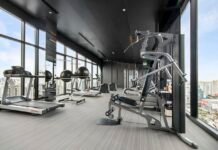Thanks to the busy lifestyles that most people today lead, it has become a common practice for people to gravitate toward establishments that offer greater convenience. Restaurants are a good example as they offer delicious meals in a beautiful environment, and guests need not worry about all the work of preparing and cooking ingredients, as well as cleaning up.
Restaurants with a good reputation for delivering excellent dining experiences enjoy long queues of excited patrons daily, which is definitely good news. It must be noted, however, that catering to large crowds on a regular basis can present challenges every now and then.
For instance, the pressure of handling the increased demand for a restaurant’s top-selling items and the rush of customers during the busiest times of the day can lead to errors during meal preparation, piled-up orders, and service mix-ups.
It’s only natural for restaurant staff to experience extremely busy days. Thankfully, there are innovations in digital technology that are designed to address such issues so that restaurants can maintain organized operations, uphold the quality of their food and service, and continue providing convenience and enjoyment for all customers.
What Technological Innovations Do Restaurants Use to Improve Their Operations and Services?
From conveyor belt delivery systems to digital menus, modern restaurants are exploring technological capabilities to enhance the flow of their operations as well as their services, especially during busy hours. Here are seven great examples:
1. Conveyor Belt Delivery System
This system is mostly used by sushi restaurants to cater to busy lunch hours. The conveyor belt delivery system displays the different menu items, and it is hooked with a smart accounting program to make billing a breeze for every customer.
This impressive technology has yet to be applied to restaurants offering other cuisines, but the Japanese have fine-tuned the system for optimum efficiency and convenience. With conveyor belts, orders are prepared and delivered quickly. What’s more, payments can be completed more efficiently as well, allowing the restaurant to accommodate more customers in a shorter period of time.
2. Restaurant POS System
A point of sale system was used initially by convenience stores, but restaurants are using them as well to stay customer-focused. With the system, data is generated from every transaction with customers. The system monitors patterns that determine customer preferences and inclinations.
With a restaurant POS system, the business can come up with programs to lock in customer loyalty, such as VIP privileges, while also delivering more satisfying services.
3. Waiter Digital Menu
It has become more and more common for restaurants to use a digital menu to expedite the ordering process. It reduces potential communication errors between the waiter and customers. With a few clicks on the buttons of the waiter digital menu, customers can send their specific customized orders (for example, no tomatoes and onions for a burger) directly to the kitchen.
This technological provision likewise allows restaurants to modify their menus easily. They can add new items and integrate special programs, such as promotional offers or discounts, to enhance the dining experience of their customers. The digital menu also makes order computations accurate and fast.
4. Kitchen Display System
This program goes hand in hand with the waiter’s digital menu because it displays orders so all kitchen staff members can work together in an organized way to prepare meals. A more organized process reduces the likelihood of confusion and speeds up the operations.
It’s important to mention as well that this system eliminated the need for orders handwritten on paper, making the operation less prone to human error, not to mention more environment-friendly.
5. Table Management Software
What this program does is it provides a visual layout of the restaurant so customers can be seated right away. This helps make sure that guests come in and go out faster, and restaurant staff gets to prepare vacated tables just as quickly to accommodate a new group.
This software boosts productivity and customer satisfaction by ensuring that guests are never kept waiting for a long time.
6. Inventory Management Software
This program is one of the keys to ensuring that a restaurant always has the ingredients for its best-selling items. With the help of the software, it’s easier to monitor the equipment, tools, and amount of ingredients in the inventory, so it’s easy to restock and meet the demand of guests.
Not only that, but this software is also instrumental in pushing the creativity of the chef or cooks. Through frequent reference to the data that this program gathers, the food preparation team can determine what ingredients should be incorporated more in recipes. This is not only to prevent wastage but also to be able to deliver something new and exciting to customers.
7. Employee Timesheet Software
Although this program does not specifically address the convenience requirements of customers or guests, it ascertains that restaurant operations are always adequately manned.
The employee timesheet software is also useful in evaluating employee performance so they can be assigned the tasks wherein their contribution would be most valuable.
Technology is truly changing the way businesses operate (quite often, for the better). If you are a restaurant owner and you want to take your services and products to the next level, explore how the provisions listed above can benefit your day-to-day activities.


























